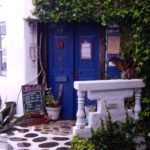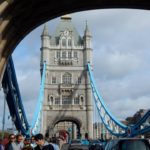
(TAN): “An island where people and Gods live together”.
This is how Miyajima’s official tourism website describes the island located in western Japan’s Hiroshima Bay.
Itsukhushima or Miyajima, which lies about 20 kilomtres from central Hiroshima, is visited by millions of tourists every year – nearly 4.31 million people reportedly visited the island last year. Locals have revered Miyajima, Japanese for “shrine island”, as a place for nature worship for centuries. It was founded by a Buddhist priest Kabodashi in 806 A.D., the first year of the Daido period.
[ALSO READ: Japan to develop 50 new luxury hotels ahead of 2020 Olympics]
Surrounded by mountains and forests, the island is home to ancient temples and shines, the most illustrious among them being the Itsukushima Shrine, a Shinto shrine. Its main shrine, that has been listed as a UNESCO World Heritage Site, was said to have been constructed in 593 A.D. by Saeki Kuramoto.
Must see in Miyajima
Possibly the most iconic symbol of the island is the orange gate of the shrine – the Torii Gate, that seems to float in the sea during high tide. The shrine complex also includes several buildings including a main hall, a prayer hall, and a noh theatre stage.
Mount Misen, Miyajima’s highest mountain, offers panoramic views of the Seto Inland Sea and as far as the city of Hiroshima. Visitors can take the ropeway from town or hike up the mountain via one of its three hiking trails – the Momijidani Course, the Daisho-in Course or the Omoto Course.
The flame that was ignited by Kabodashi for a hundred-day Gumonji worship, has been kept alight in the Reikado Hall or the Hall of the Spiritual Flame. Visitors can also take a look around the main hall or Misen Hondo.
[ALSO READ: Airbnb delivers USD 2 billion in tourist-related taxes to local governments]
Daisho-in constitutes one of the most significant temples associated with Shingon Buddhism. Located at the foot of Mount Misen, it offers several buildings, statues and other objects of religious importance.
Tokoyuni Shrine, also addressed as Senjokaku, a pavilion of 1000 mats, is situated on a hill next to Itsukushima Shrine. Built in 1587, it is a sprawling hall roughly the size of a thousand tatami mats. It was meant to be a library where the chanting of Senbu-kyo sutras could be held every month.
The island features several pleasant walking paths, some of which lead through the Momijidani or one of Japan’s most famous maple leaf valley parks. The park stretches along the Momijidani river at the foot of Mount Misen.
The island to impose tax on tourists
Tourists putting Miyajima on their bucket lists will have to shell out extra bucks in near future.
[ALSO READ: ITB Berlin Convention 2020 to focus on smart tourism]
The island, like several other tourist destinations across the globe, will charge tourists a fee to visit – an admission fee of ¥100 (USD1 approximately) per person has reportedly been proposed.
Taro Matsumoto, the new mayor of Hatsukaichi city in Hiroshima prefecture who came up with the idea said the tax could help sustain the “quality of the Island as a tourist spot”.
“The island needs maintenance and repair work, including placing power lines underground and repairing roads. I’m focused on introducing the tax as a stable source of income,” reports quoted him as saying.




